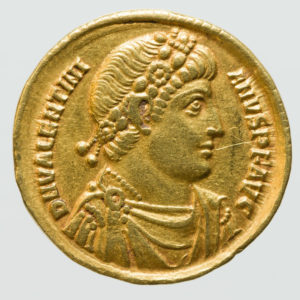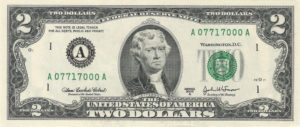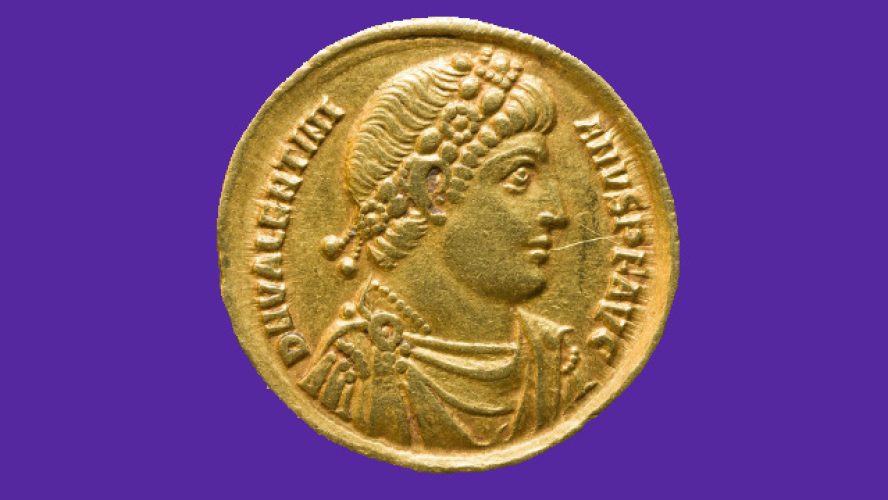Money 3.0: Cryptocurrencies
Why are cryptocurrencies like Bitcoin and Ethereum Money 3.0? And what are Money 1.0 and Money 2.0?
Recently, Jamie Dimon called Bitcoin a ‘fraud’. This coming from the CEO of JP Morgan, the bank that has been fined more than any other, save one, for financial crimes since the Great Recession of 2008. His statement reeks of hypocrisy since JPM is a member of the Enterprise Ethereum Alliance, his traders have been trading Bitcoin related ETN securities, and his firm has applied for patents using blockchain technology.
By the way the Enterprise Ethereum Alliance has well over 100 members including Microsoft and Mastercard. Serious players understand that cryptocurrencies are a big deal. The market cap of all cryptocurrencies is currently in the neighborhood of $150 billion, around 2/3 the market cap of Visa. And this has all happened in only eight years’ time.
First, what is Money?
It is amazing how few people can give a definition, other than pulling out a bill from their wallet, or referring to the numbers in their checking account statement. And how does money get created in our modern economy? Very few actually understand the process. Most people say government creates it. Governments can, and do, but most money is not created directly by the government. What the government does is validate money, they define a single type of money for their nation. They print currency, but most money today is digital, residing in bank balance sheets, and most money creation occurs as banks issue new loans.
Throughout history there have been many forms of money, but two forms have dominated. The first form, Money 1.0, was the dominant form for millennia. It was coins made of precious metals, in particular gold and silver, and ‘base’ metals such as copper and bronze. According to the St. Louis Federal Reserve, money must have six properties: durability, portability, divisibility, uniformity, limited supply, and acceptability.
They sound a bit like goldbugs when they write it that way. These are all useful attributes of the thing that is used for money, be it gold or paper. But it doesn’t quite get to the most essential three properties of money. It must serve as:
- A unit of account
- A store of value, and
- A medium of exchange
Money is whatever can be used as a socially agreed upon unit of account and medium of exchange. It also should retain its value, not depreciate quickly, so that it can be used next month and next year as well. Notice I say socially. Societies agree upon what is used as money, and nation states in recent centuries have taken the lead in that definition. In order to be conveniently exchanged, then the six properties above come into play. Durability and limited supply allow the retention of value. Portability and divisibility make it easier to exchange. Uniformity makes it a useful unit of account, as does acceptability.
We all have to more or less agree on what the accounting unit is. That is actually the starting point for money, agreeing on the standard measure. The government can decree the accounting unit, and can demand taxes be paid in that unit. That is government fiat, and can apply for either coined money of precious or base metals (Money 1.0) or paper money (Money 2.0).
 Image: Roman gold Solidus coin. York Museums Trust. CC-BY-SA 4.0
Image: Roman gold Solidus coin. York Museums Trust. CC-BY-SA 4.0
The US dollar was originally defined to contain a certain weight of silver, and aligned to the Spanish dollar (originally Austrian thaler) or ‘pieces of eight’ that was widely used in New World trade. The US dollar has also been defined against gold, with an official act in 1900 following nearly 3 decades of defacto gold standard following the Civil War. Of course the gold standard is now entirely gone after being discarded in two phases, under Roosevelt in 1933 and Nixon in 1971. The remnants of the bimetallic standard of the late 19th century remain in present-day dimes and quarters that used to contain silver even until 1965, retain the color, but have been entirely debased.
No nation remains on a Money 1.0 standard of precious metals, all have moved to Money 2.0, fiat paper money. If they did they would lose their gold, and they prefer to melt it into bars and store it in central bank vaults as a reserve. So as Warren Buffet says, we dig it up in mines, melt it down into bars, and bury it again in vaults.
With paper money, there must be fiat, as nobody wants pieces of paper that have no value. The days of gold certificates and silver certificates as circulating currency are long gone, although I remember silver certificate dollar bills from my youth. The value comes from the legal tender requirements that the paper be accepted by businesses, be used for taxes, and from the government’s printing process to make counterfeiting difficult plus the government’s overall management of the money supply (usually through interest rate policies) to limit loss of value due to inflation.
The technology of high quality paper engraving, augmented with serial numbers, threads and holograms, and the technology of central banks, allow fiat money to work. The vast majority of nations have central banks to lend to the commercial banks in times of crisis and to manage the banking system and money supply indirectly.
So those are Money 1.0 and Money 2.0. In summary:
Money 1.0 – Public or private, asset-based, intrinsic value, coins or bars of precious metal
 Image of $2 Federal Reserve Note, Bureau of Engraving and Printing, U.S. Dept. of Treasury
Image of $2 Federal Reserve Note, Bureau of Engraving and Printing, U.S. Dept. of Treasury
Money 2.0 – Public and sovereign, debt-based, no intrinsic value, paper and digital.
Most Money 2.0 is digital, with the circulating currency representing a small percentage. Money mostly comes into circulation not through the printing press, but when banks make new loans. If a bank creates an auto loan, it credits the checking account of its customer digitally. Banks are allowed to make new loans within the limits of their central bank authority determined reserves and equity capital requirements.
Note as an aside that Money 1.0 and Money 2.0 can coexist. We mostly have Money 2.0 in the United States, but there was a small amount of silver coinage money circulating alongside up until the 1960s. This is an important principle, since we are beginning to see the coexistence of Money 2.0 and Money 3.0.
What about Money 3.0?
Cryptocurrencies are purely digital, whereas Money 2.0, fiat and debt-based money, is mostly digital.
Why Money 3.0? Technologists and advocates of non-fiat money were concerned about the risks of centralized monetary systems dominated by central banks and by money center banks engaged in fraudulent activities around mortgages and other lending with derivatives including CDOs, CDSs and more. The corrupt system lead to the Great Recession of 2008. Everyone in the society suffered, but the banks were bailed out by enormous government loans.
There were more than 50 attempts at creating a digital crypotcurrency prior to the year 2000. None succeeded. One was gold-based and known as e-gold. It was shut down in 2009 by the US government, because it ran afoul of stricter money laundering regulations. It was also subject to repeated thefts of accounts from Russian and other criminal hackers.
A successful non-fiat cryptocurrency must provide a single secure ledger of entries to protect against counterfeiting and double spending. It must have a method of commiting a single instance of a transaction to this secure ledger that is publicly shared, and is known as the blockchain. It must have a built-in automated “central banking” function that determines the money supply.
Satoshi Nakamoto’s brilliance was to combine a number of existing ideas around public/private key cryptography, distributed ledgers, and a mining algorithm with “proof of work” that rewarded miners for solving a difficult cryptographic hash problem. Transactions are signed with private keys. All bitcoins reside in the distributed ledger. The owner has a wallet with the key that allows them to transfer bitcoin in arbitrary amounts to someone else and thus confers ownership.
The supply is limited with a maximum at 21 million bitcoins that will not be reached until well into the 22nd century. New bitcoin comes into existence in conjunction with the mining of blocks of transactions. The successful miner is rewarded with an allocation of new coins, presently 12.5 coins per block of approximately 2000 transactions. So here we have the central banking function and a digital minting or mining process for the ‘coins’ which are really just ledger entries.
We describe this Nakamoto consensus algorithm and the mining process in more detail at orionx.net/podcast.
Now we have not just Bitcoin, but Ethereum, Bitcoin Cash (which is a recent fork of Bitcoin with large block size), Ripple, Litecoin and hundreds more cryptocurrencies. We have new coins being created rapidly in conjunction with new applications and ICOs – initial coin offerings.
The largest of these, those with market caps in the billions of dollars, meet the three requirements for money. Unit of account. Medium of Exchange. Store of value. Their limitations at present relate to the latter two attributes. They are accepted as medium of exchange in some environments, but relatively few compared to existing fiat currencies. And as a result of that their value is less stable and determined more by investment and speculative demand. Their ultimate value will be determined by the cryptocurrency economy as uses cases, applications, and acceptance grow.
They are child currencies, developing and growing, but far from the maturity of an existing national fiat currency. The value should continue to grow for the long term, however since transaction volumes are increasing very rapidly.
So now we have in the world:
Money 3.0 – Private and globally distributed, asset-based, digital only.
Money 3.0 holds much promise. It can remove a lot of cost and friction from the financial system. Trying sending a check or ACH transfer to your sister and having the transaction complete on the weekend. Send her some bitcoin? She will get it even on Sunday at 3 am around an hour or so after you send it. Bitcoin is 24 by 7 by 365. And with very limited fees within the Bitcoin economy. Most of the cost is in moving Bitcoin to fiat or vice versa.
It is not based on debt, so does not have the instability of debt or counterparty risk. The only real risk is security, which holds as well for your banking balances. The other risk is to the value as governments and politicians feel threatened. But at the end of the day, they can only regulate it, but not eliminate it. The technology is too widely available to anyone.
Money 3.0 is not poised to replace Money 2.0 anytime soon, although in a number of ways it is superior. They will coexist. At some point a small country will convert their currency to Money 3.0, by building a blockchain-based peso or some such. A number of central banks, large and small, are already studying this issue.
Many have talked about global currencies in the past. The US dollar has global impact for trade and the price of key commodities, but you have to exchange it when you cross borders. The Euro has been a boon for commerce, trade, and travel in many countries within Europe. Gold historically had a global role but was difficult to move and verify as to weight and purity.
Bitcoin has no weight and purity issues. It transcends borders. It, Ether, and the other cryptocurrencies are indeed the first global currencies.
Stephen Perrenod has lived and worked in Asia, the US, and Europe and possesses business experience across all major geographies in the Asia-Pacific region. He specializes in corporate strategy for market expansion, and cryptocurrency/blockchain on a deep foundation of high performance computing (HPC), cloud computing and big data. He is a prolific blogger and author of a book on cosmology.


Jamie Dimon is Afraid - OrionX.net: Deep Insight, Market Execution, Customer Engagement
October 9, 2017 @ 7:15 am
[…] It certainly is not a fraud. It is in fact a more advanced form of money our fiat currency; it is Money 3.0. […]
Cryptocurrency a Bridge to the Future - OrionX.net: Deep Insight, Market Execution, Customer Engagement
October 26, 2017 @ 2:00 am
[…] meets the attributes of currency, see our Money 3.0 article. It is not debt-based, as are all currently circulating fiat moneys, paper and digital […]
OrionX Releases New Blockchain Constellation™ Research Paper “Cryptocurrency Outlook: More Chasm Crossing” - OrionX.net: Deep Insight, Market Execution, Customer Engagement
April 3, 2018 @ 6:32 pm
[…] “Blockchain and cryptocurrency are at the forefront of online conversation,” said Dr. Stephen Perrenod. “Everyone from novice investors to seasoned economists is working to develop a new level of understanding of ‘money in the internet’ as cryptocurrency value remains volatile but seems to show staying power.” Perrenod’s research breaks down the specifics of how this technology works and what the future may hold in terms that are understandable to anyone seeking an education on what he calls “Money 3.0.” […]
Blockchain/Cryptocurrency: OrionX Constellation™ Research Paper
November 12, 2018 @ 11:45 am
[…] “Blockchain and cryptocurrency are at the forefront of online conversation,” said Dr. Stephen Perrenod. “Everyone from novice investors to seasoned economists is working to develop a new level of understanding of ‘money in the internet’ as cryptocurrency value remains volatile but seems to show staying power.” Perrenod’s research breaks down the specifics of how this technology works and what the future may hold in terms that are understandable to anyone seeking an education on what he calls “Money 3.0.” […]
Todays User Suggested Website: orionx.net/2017/10/money-3-0-cryptocurrencies/
December 27, 2018 @ 7:26 pm
[…] Todays User Suggested Website:From time to time our members recommend websites of interest to them. Please visit: orionx.net/2017/10/money-3-0-cryptocurrencies/ […]